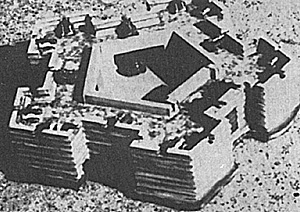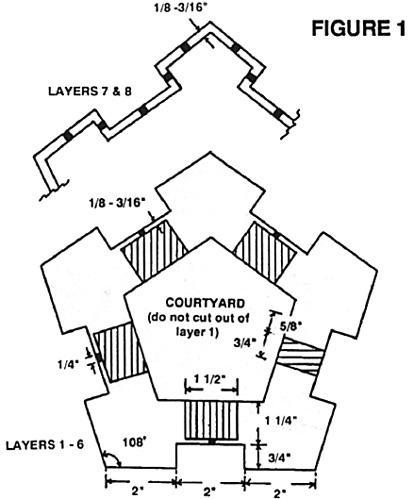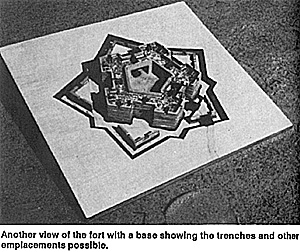 Sieges were a major feature of 17th and 18th century warfare. Whereas castles were once the acme of defensive design, by the 17th century only low, thick walled, bastioned fortresses were proof against a well equipped siege train. The art of fortress design reached its pinnacle during the reign of Louis XIV with the geometrical masterpieces of the great French engineer, Vauban. Located on the frontiers of France, his fortresses were sufficiently strong to repel all but the most determined of besiegers.
Sieges were a major feature of 17th and 18th century warfare. Whereas castles were once the acme of defensive design, by the 17th century only low, thick walled, bastioned fortresses were proof against a well equipped siege train. The art of fortress design reached its pinnacle during the reign of Louis XIV with the geometrical masterpieces of the great French engineer, Vauban. Located on the frontiers of France, his fortresses were sufficiently strong to repel all but the most determined of besiegers.
Wargamers wishing to recreate these epic sieges may be discouraged by the cost of buying a model Vauban fortress. In 15mm they can cost over $100, and their cost is almost twice as high in 25mm. For wargamers with lots of time and little money, an inexpensive alternative to buying a model fortress is to construct one out of foamcore. Foamcore is a product which consists of styrofoam sandwiched between two layers of poster board. Foamcore is sold at office and art supply stores in poster sized sheets, and it is available in various thicknesses. For purposes of this model, 1/4-inch thick foamcore will be used.
 Embrasures shown SOLID to be cut out of layers 3,4, & 8
Embrasures shown SOLID to be cut out of layers 3,4, & 8
Gate shown as HORIZONTAL STRIPES to be cut out of layers 2,3,4, & 5
Gun Galleries shown as VERTICAI STRIPES to be cut out of layers 2,3,4, & 5
Materials
The following materials will be required to construct the fortress: 2 sheets 22" X 28* X 1/4" foamcore sharp craft knife metal straight edge art markers white glue INSTRUCTIONS
1. Draw eight pentagons on the foamcore to the dimensions given in Fig. 1. Instead of drafting eight pentagons, it will be easier to make a template on a piece of paper and trace it eight times.
2. Using the metal straight edge and the craft knife, cut out the pentagons.
3. Cut out the inner features of the fortress (courtyard, embrasures, gate, gun galleries). Note that Layers 2 and 5 are identical, as are Layers 3 and 4; Layers 7 and 8 are 1/8 to 3/16inch thick; and Layer 1 is solid and lacks all interior features.
4. Cut out the outer features of the fortress (bastions) for all eight layers of foamcore.
5. Color the layers. Tempera paints work well; however, being water soluble, they will later smear because of the sweat on a nervous wargamer's hand. Better results will be obtained with indelible art markers, which are available in appropriate colors of grey and brown. These markers will dissolve the styrofoam slightly, but they will provide permanent coloration.
6. Glue the layers together. See Fig. 2.
This model has vertical walls. If you would like to simulate the slight slope of Vauban fortress walls, then make Layer 1 slightly larger than Layer 2, Layer 2 slightly larger than Layer 3, and so on.
The advantages of constructing a Vauban fortress in foamcore are several. First and foremost, the resulting fortress will be inexpensive. Second, the courtyard and terreplein will be flat and horizontal; you won't have to worry about your individual figures losing their balance on a rough surface. Third, the fortress will be light weight and easily transportable. And, fourth, the fortress will be monolithic.
 Another view of the fort with a bass showing the trenches and other emplacements possible.
Another view of the fort with a bass showing the trenches and other emplacements possible.
Commercially available fortresses come in sections, and it is easy for a careless wargamer to accidently knock over a curtain wall or bump a bastion. This problem is eliminated with a one piece foamcore fortress.
The modeler may, however, wish to construct a foamcore fortress in sections. This will allow intact sections of fortress wall to be removed and replaced with breached sections of wall as a siege game progresses. Foamcore is so inexpensive and easy to sculpt that different degrees of damage can easily be modelled.
Foamcore can be used to construct almost any essentially horizontal fortification. Medieval castles, Napoleonic redoubts, Civil War trench lines, World War II pillboxes, and even ships and boats can be modelled in foamcore. Buy a few sheets and experiment!

Back to Table of Contents -- Courier #57
To Courier List of Issues
To MagWeb Master Magazine List
© Copyright 1992 by The Courier Publishing Company.
This article appears in MagWeb (Magazine Web) on the Internet World Wide Web.
Other military history articles and gaming articles are available at http://www.magweb.com